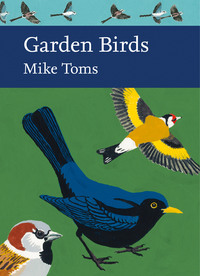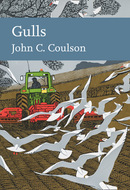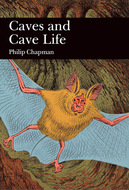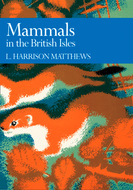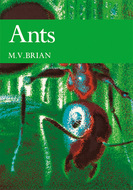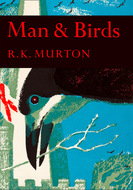Kitabı oku: «Garden Birds», sayfa 3
DISEASE AND THE URBAN ENVIRONMENT
Chapter 4 explores the diseases affecting garden birds in detail, but it is important to give a brief overview here of how disease risks differ between urban and rural environments. Comparisons between the diseases of urban and rural populations of birds have yielded mixed results when it comes to seeking general patterns of occurrence and prevalence. Some studies, such as the work of Grégoire et al. (2002), Fokidis et al. (2008) and Evans et al. (2009a), have found reduced parasite loads in urban populations of garden bird species, including Blackbird. Others, such as Giraudeau et al. (2014) have found higher levels of disease in more urban areas. Giraudeau’s work revealed that the severity of coccidian infection in House Finch Haemorhous mexicanus and the prevalence of pox virus were both inversely related to the proportion of undisturbed habitat within the Phoenix metropolitan area. Patterns of disease infection along urban to rural gradients, and across the different habitats within the urban environment, may differ between diseases, in part a reflection of variation in how different diseases are transmitted. In the case of parasites, transmission may require an intermediate host that is absent from the urban environment (Sitko & Zales´ny, 2014), but for other diseases – including those transmitted between individuals through contaminated food – transmission rates may increase in gardens and other urban sites because of the high densities of birds attracted to garden feeding stations (Lawson et al., 2018). The provision of food at garden feeding stations may also influence disease dynamics (Galbraith et al., 2017a).

FIG 10. Garden feeding stations have been implicated in the transmission of disease between different species of garden bird, but the presence of supplementary food also has positive benefits for birds like this Brambling. (Jill Pakenham)
ARE GARDENS IMPORTANT?
As the figures presented within this chapter demonstrate, gardens and the wider built environment support significant proportions of the breeding populations of certain bird species. In addition, gardens and their associated resources may be important for particular birds at other times of the year or during periods when the availability of key resources within the wider environment is at a seasonal low. This underlines that gardens are important, and not just for species flagged as being of conservation concern. How we manage our gardens and the resources they contain has consequences for bird populations and, as we shall see later in this book, may also help to drive evolutionary change. It is important to remember that garden bird populations do not exist in isolation, since birds are well able to move between different habitats or regions. While gardens may not be as suitable as certain other habitats for breeding, they may be better in other ways, at least for some species.
We are, however, far from fully understanding the role that gardens play in a wider context, particularly in relation to source-sink dynamics, and it is certainly too early to be able to quantify the true value (or cost) of garden living for bird populations here in the UK, in Europe or North America, let alone elsewhere in the world. The mobility of birds makes it difficult to follow individuals throughout their full life cycle; in turn, this prevents us from being able to determine why particular individuals use gardens and the consequences or benefits of this use on future events in their lives. For a young Great Tit, raised in a piece of mature deciduous woodland bordering a city’s suburbs, the presence of suitable food in garden bird feeders may enable it to survive its first winter when it would otherwise have died. While this fortunate individual may fail to secure a prime woodland breeding territory the following year, and instead end up making a failed breeding attempt in a garden setting, it may still have the opportunity to occupy a woodland territory in a subsequent year. In the end, this individual’s lifetime reproductive success may still be better for having used a garden and its resources, than would have been the case had it only ever lived within a woodland site.

FIG 11. Gardens across the globe vary greatly in their structure and in the plants they contain, something that can reflect both cultural differences and local conditions. (Mike Toms)
CONCLUDING REMARKS
Before we leave this chapter and turn to look in more detail at particular aspects of the garden environment, it is worth reminding ourselves that the gardens present here in the UK, and across much of western Europe and North America, are often very different from those in other parts of the world. Thinking about gardens in a more global context forces you to move away from the predominantly recreational basis to gardens located within western Europe and North America. Many home gardens elsewhere are very different and provide families with space to engage in food production for subsistence or small-scale marketing. Such gardens may also play an important social or cultural role, perhaps acting as spaces within which knowledge related to agricultural practices can be shared. The management of these spaces creates structures and microclimates that are typically very different from the surrounding countryside; in this respect they can be considered alongside the more familiar urban and suburban gardens of western Europe, even though they look and act very differently (Guarino & Hoogendijk, 2004). It is known, for example, that ‘home gardens’ support high levels of inter- and intra-specific plant diversity, making them important in a global context, but far less is known about the role that they play for wider biodiversity and, in the context of this book, wild birds (Galluzzi et al., 2010). For the most part, however, we will just consider the gardens of western Europe, North America and Australasia in this book, something that also reflects where the greater amount of research has been carried out. The pattern of research worldwide isn’t just linked to particular geographic areas, since it has also been demonstrated that there is a positive and significant association between the degree of urbanisation of a species and how frequently it has been the subject of scientific study (Ibáñez-Álamo et al., 2017).
This chapter has highlighted the fact that gardens come in many different forms and that this has consequences for the communities of birds associated with them. The birds present in our gardens are the species that have, for the most part, adapted to the process of urbanisation to take advantage of the resources and other opportunities that gardens and the wider built environment provide. While some of these species populations are resident within the built environment, others make use of our gardens on a seasonal basis. Most UK gardens are located within highly urbanised landscapes; with urban land cover globally predicted to triple between 2000 and 2030 (United Nations, 2014), we can expect to see future changes in our garden bird communities. Such changes are part of an ongoing process that has altered the distribution of bird species, changed the composition of avian communities, brought about local extinctions and altered behaviour. It is these features and processes that we will examine of the following chapters, starting with feeding opportunities (Chapter 2), then moving on to an examination of breeding behaviour (Chapter 3), disease risk (Chapter 4) and behaviour (Chapter 5).
CHAPTER 2
Foods and Feeding
FEEDING WILD BIRDS IS UNDOUBTEDLY a popular pastime here in the UK and a great many of us put out mixed seed, sunflower hearts and fat- or suet-based products for our garden birds. The addition of such food to the environment represents a substantial supplementation of the resources available to wild birds, yet we still lack a clear understanding of its effects. In a wider research context, we know that food supplementation can increase survival rates (Brittingham & Temple, 1988a), change community and population structure (Galbraith et al., 2017b), alter behaviour (Saggese et al., 2011; Plummer et al., 2015) and impact on wider biodiversity (Orros et al., 2015a). It has also been linked to disease transmission in birds (Lawson et al., 2018) and to health and well-being benefits in people.
Through this chapter we will explore how and why supplementary food is provided to garden birds, how provision varies across countries, cities and cultures, and the consequences that such provision has for the birds that visit our gardens to partake of this significant resource. Understanding why people feed wild birds and the extent to which they appreciate its costs and benefits will be central to our exploration, as will a review of the scale of food provisioning, which is where we will start this chapter.
THE PROVISION OF FOOD FOR WILD BIRDS
It has been estimated that between one-quarter and two-thirds of households across major parts of Europe, North America, Australia and New Zealand provide food for wild birds (Thomas, 2000; Ishigame & Baxter, 2007; United States Fish & Wildlife Service, 2011; Davies et al., 2012). Within the UK, and using figures from the English Housing Survey and other studies, Davies et al. (2009) reported that 48 per cent of households, and 51 per cent of households with a garden, participated in feeding wild birds. Perhaps more interestingly, the study also reported that 28 per cent of households, and 23 per cent of households with a garden, specifically used bird feeders. An earlier and often quoted study by Cowie & Hinsley (1988a) put the figure at 75 per cent, but was based on a small sample of households (in Cardiff) and did not properly account for those questionnaires that were not returned. Work in Reading, Berkshire, using a face-to-face questionnaire approach outside supermarkets, came up with a figure of 55.3 per cent for the proportion feeding wild birds, of which 65 per cent reported that they fed all year round (Orros & Fellowes, 2015b). Marketing work by the RSPB, using two separate telephone surveys of randomly selected groups of 1,000 people and carried out in summer and winter 2004, indicated that 56 to 61 per cent per cent of people over the age of 16 had fed their garden birds during the past year (RSPB, unpublished).

FIG 12. Suet-based foods, such as fat balls, have become very popular with UK householders, their use targeted at small garden birds like tits and Starlings. (John Harding)
A rough calculation by Zoe Davies and colleagues, based on the population sizes of birds known to use seed feeders, suggests that there is at least one bird feeder for every nine potentially feeder-using birds. This does not allow for the fact that many households provide food in more than one feeder, or that many bird feeders are sitting empty at any one point in time. RSPB data, again from their marketing survey, suggest that on a typical summer’s day one in every seven gardens has at least one empty bird feeder. Even so, it does underline the potential scale of food provisioning taking place within the UK – something Davies et al. (2009) have suggested could equate to a standing crop of 2,580 tonnes of bird food. Figures from the Pet Food Manufacturers Association put UK bird food sales at c. 150,000 tonnes annually, representative of an annual consumer spend in excess of £200 million. O’Leary & Jones (2006) suggest that in excess of 500,000 tonnes of food is provided annually across the UK and US combined, while United Nation’s figures from 2005 put the global bird food industry’s value at $5–6 billion, with growth of c. 4 per cent annually since the 1980s (Lin, 2005).
Thanks to the periodic National Survey of Fishing, Hunting, and Wildlife-Associated Recreation, we know that expenditure on wild bird foods within the United States has doubled over a 20-year period, exceeding $4 billion per year by 2011 (United States Fish & Wildlife Service, 1991; 2011). We lack a comparable survey within the UK, and securing commercially sensitive sales information from the wild bird care sector is problematic, but it is thought that the current annual UK spend on wild bird care products (food, feeders and nest boxes) is between £220 million and £500 million (Fuller et al., 2012).

FIG 13. The proportion of BTO Garden BirdWatch participants presenting different foodstuffs at their garden feeding stations each week across four of the project years (2014–17). Note the increase in fat and suet provision during the winter months. ‘Live’ foods include dried mealworms. Data reproduced with permission from BTO.
Information from the weekly submissions made by BTO Garden BirdWatchers provides a measure of the change seen in different types of bird food (see Figure 13) but these data come from a subset of the national population (see Chapter 6) and do not reveal the actual quantities provided. Having said this, as part of BTO’s work on microevolution in Blackcaps (see later in this chapter), we were able to estimate that the total volume of sunflower hearts and fat products provided by BTO Garden BirdWatchers during the winter months more than doubled from 6.35 tonnes to 17.26 tonnes over the course of a 12-year period (Plummer et al., 2015).
WHY DO PEOPLE FEED WILD BIRDS?
While bird feeding is clearly influenced by external factors, such as socioeconomic status and having access to a garden, it is also shaped by intrinsic and motivational factors. At its heart, bird feeding may be seen as a humane act, an act of kindness reflecting a wish to help a fellow creature. However, this act may be further shaped by other motivations, such as guilt or a wish to learn. Despite the obvious commercial advantages to be gained by understanding motivations for feeding wild birds, there has been relatively little work in this area and many of our assumptions about why people provide supplementary food for wild birds remain untested (Jones & Reynolds, 2008). Understanding motivations requires a considered and rigorously scientific approach; it is all too easy to inadvertently bias a response from a study subject by asking a question in the wrong way.
The work that has been done suggests that people feed wild birds for a range of different reasons driven by underlying environmental, cultural and philosophical perceptions (Davies et al., 2012). Many people derive pleasure from feeding wild birds and in many instances the provision of food is simply a reflection of this. Others feed because they are concerned about wild birds (and other creatures) and wish to nurture and support them. Some provide food because of the experiential knowledge that is gained, while others seek to counter the guilt that they feel over wider human impacts on the environment.
Examination of a random sample of 1,000 participants in BTO’s weekly Garden BirdWatch scheme (Schreiber, 2010) found that ‘pleasure’, ‘contributing to the survival of wild birds’ and ‘studying behaviour’ were the top three justifications given by respondents for feeding. ‘Responding to environmental degradation’ and ‘teaching children’ were also given as reasons for feeding. Of course, participants in a citizen science scheme like Garden BirdWatch are unlikely to be representative of the wider UK public; they have sufficient interest in garden birds to have become involved in a rigorous monitoring scheme and will have been exposed to articles delivering information and messages on the practices associated with feeding wild birds. At this point it is just worth noting that the provision of supplementary food is sometimes practised for other reasons; conservation practitioners use supplementary food to enhance the survival and reproductive success of endangered species, while others use it to reduce predation pressure by provisioning predators; some use it to bring animals to sites where they can be observed or even hunted.

FIG 14. Peanuts were one of the first foods provided specifically for wild birds visiting UK gardens. Originally presented loose or in net bags, peanuts are now typically provided in mesh feeders, though their use has fallen with the arrival of new high-energy seeds. (Jill Pakenham)
The provision of food at garden feeding stations, and indeed the wider participation in wildlife-friendly gardening, may also be a response to peer pressures or the development of a shared social ideal, or to the opportunities provided by having the time and/or financial resources required. The ‘luxury effect’ noted by Hope et al. (2003), Kinzig et al. (2005) and others, where wealthier neighbourhoods support greater levels of vegetation cover and have a greater richness of vertebrate taxa, may also apply to the provision of food for wild birds. We’ll return to this as we move through the next two sections.
As well as seeking to understand the motivations for feeding, it is also important to understand any concerns that those feeding wild birds may have about the practice. While some individuals may only see feeding as being beneficial – for their own interest or for the welfare of the birds themselves – others may continue to feed even if they have concerns about particular aspects of the practice. The sample of BTO Garden BirdWatch participants just mentioned were also asked whether they had any concerns about feeding and, if so, what these might be. Just under half of the respondents noted that they did have concerns; those highlighted being the risk of disease transmission, the risk of attracting predators, and the risk of attracting unwanted species to the garden.
THE VARIATION IN FOOD PROVISION
Across northern Europe and North America the feeding of wild birds appears to have once been a winter practice, suggesting that food was provided in recognition of the challenging winter conditions being faced by birds. To some extent feeding remains a winter practice; as data from BTO Garden BirdWatch reveal, the proportion of its participants providing supplementary food shows a strong seasonal pattern with increasing provision during the winter months. Up until the 1980s, the prevailing view was that feeding wild birds during the breeding season would lead to adult birds feeding their young on unsuitable foods and perhaps lead to nestlings choking on ‘indigestible foodstuffs such as peanuts’. Despite this, a pronounced move towards feeding year-round was made during the 1980s, when the advice provided by both the RSPB and BTO switched from winter only to feeding throughout the year.
The switch in BTO’s position was evidence-based and derived from work carried out by Patrick Thompson, who organised a special spring extension to the BTO’s Garden Bird Feeding Survey (Thompson, 1987). The study sought to compare the numbers of feeding birds in the spring with those seen in winter and to determine which species made use of garden feeding stations during this period. Some 181 participants took part in the winter component, with 113 contributing to the spring extension. While fewer species were recorded in the spring component than in the winter, the same species were present in the top 12 in both studies; for some species the level of feeding in spring was as high as, or higher, than that seen in autumn or winter. In House Sparrow, for example, feeding activity peaked in late spring. Other species, e.g. Robin, Blue Tit and Great Tit, used provided food extensively through into the first month of the spring survey, but after this their use of this resource dropped markedly. This drop in use was thought to reflect a shift towards natural prey, which generally become more abundant in spring. That seed-eating species, like Dunnock Prunella modularis and Greenfinch, did not move away from provided food quite so quickly perhaps underlines a lack of seed availability more widely until later into the year.
The second component of Thompson’s study looked at the breeding season use of supplementary food (peanuts) by Blue Tits and Great Tits across 13 gardens at Ashridge Park, Hertfordshire. This population had been studied by the BTO’s Chris Mead since 1977. Chris was a key figure in the development of several projects studying garden birds. The garden-nesting Blue Tits bred significantly earlier than those breeding in nearby woodland and laid larger clutches. There was no difference in the timing of laying between the two Great Tit populations but the garden-breeding birds laid significantly smaller clutches than their woodland counterparts, and there was no significant difference in the fledging success of either species between the two habitats. The feeding habits of the adult tits were also carefully monitored. While Great Tits were very rarely seen to feed their young on peanuts (less than 7 per cent of visits), the Blue Tits were never seen to do this. Importantly, no young tits were reported to have died from ingesting nuts.

FIG 15. While the food available at garden feeding stations appears to be important to young Blue Tits once they have left the nest, it is only rarely provided to nestlings by adult birds. (John Harding)
Elsewhere, both Cowie & Hinsley (1987) and Perrins (1979) have noted a lower fledging success in tits using gardens compared to woodland habitats, with much of this down to chick starvation, despite the fact that supplementary foods are available in this habitat. This underlines the reluctance of adult tits to feed their young on supplementary food. Collectively, the evidence from Thompson’s study and the wider literature convinced BTO to change its advice on year-round feeding, recognising that the extra food may provide a ‘valuable food source to adult birds’. The advice to switch to year-round feeding in Germany was made even more strongly by Peter Berthold and Gabriele Mohr, both respected researchers, whose book Vögel füttern, aber richtig – loosely translated as ‘feeding birds, but right’ – made a scientifically based case for year-round feeding. Although initially criticised in some scientific circles, the book was well received by birdwatchers, shifting 50,000 copies within two years of first publication. Figures from the UK, taken from the RSPB’s marketing study, suggest that winter and summer feeding levels are now fairly similar, at least in terms of the proportion of people providing food (53 per cent summer and 59 per cent winter).
DIFFERENCES BETWEEN INDIVIDUALS
The suspicion that some people are more likely to put out food for birds than others has proved difficult to test, in a large part because of the methodological difficulties in securing a random and representative sample of respondents when carrying out questionnaire-based studies. The scale at which the data are collected can also cause problems for their interpretation. Fuller et al. (2012), for example, found that three different measures of socioeconomic status – household income, the age of householders and the number of individuals comprising the household – were poor predictors of bird feeding behaviour at the national level; however, all three were found to be strongly related to both the presence of bird feeding and the spatial density of bird feeding stations when they just looked at the city of Sheffield. It appeared that by aggregating data at a wider scale, the researchers had averaged away important fine-scale differences. The Sheffield data revealed that bird feeding and the spatial density of bird feeders increased as household income increased but showed an interesting ‘humped’ relationship with the age and number of householders.
Provisioning may also vary between individuals in terms of how often they put out food, the types of foods they provide and where the food is presented. Roughly a quarter of those interviewed by the RSPB put out food daily, with half putting out food at least once a week, and food was presented roughly equally across bird feeders (33 per cent), bird tables (27 per cent) and on the ground (30 per cent). Davies et al. (2012) found that just 29 per cent of the households they studied provided food at least once a week. The work in Reading, mentioned earlier in this chapter, had a more detailed second component; this looked at a subset of people feeding birds within the city, charting what they provided over a two-year period. As well as the finding that a significantly higher proportion of the individuals feeding year round provisioned daily, compared to those who only fed the birds during autumn and winter, the Reading work also collected valuable information on the amount of food being given. This revealed that each day the median amount provided per garden was 127 g, though ranging from 18 g to 3,573 g. Knowing what food was being provisioned, and in what quantities, enabled Orros and Fellowes to calculate a daily energy value of 628 kcal provisioned per garden per day. In addition to variation in the quantities of food provided, there was also variation in the types of food provided, with 91 per cent of individuals provisioning one to three types of food. Mixed seed was the most commonly provisioned food, by both mass and kcal; interestingly, 43 per cent of individuals still provisioned household scraps.

FIG 16. Various members of the crow family, including Carrion Crow, have taken advantage of the feeding opportunities available at garden feeding stations. Work in North America has highlighted how the nature of these opportunities may vary regionally. (John Harding)
Work in the US has also examined the question of who feeds wild birds, revealing that older people are more likely to provide supplementary food than young people (Lepczyk et al., 2012), and are more likely to be women and to have achieved higher educational qualifications than those not participating (Lepczyk et al., 2004a). Mark Goddard, working on why people in Leeds garden for wildlife, also found that the frequency of bird feeding increased with age (Goddard et al., 2013). The RSPB marketing study, which is probably the study that is most representative of the wider UK population, found that interviewees 35 years of age or older were more likely to feed their birds than those under 35 (RSPB, unpublished). Of course, the characteristics of those provisioning wild birds may sometimes confound attempts to examine the relationships between food provision and other features – for example, housing density (something we touched on in the previous chapter).
REGIONAL DIFFERENCES
Cultural differences in attitudes to birds may explain many of the regional differences in the types and quantities of supplementary food provided for garden birds. The biggest markets for wild bird food and feeding products are based in Europe and North America but even within these regions there are differences between countries and peoples. Within Europe, for example, the feeding of wild birds is common in Germany, Poland, Finland, Switzerland, the UK and the Netherlands, but not in France, Spain or indeed other Mediterranean countries. That cultural differences might be behind the patterns seen within Europe could be suggested by the differing attitudes towards the hunting of small wild birds, still a common practice in the south of Europe but not in the north. Could the differences within Europe also relate to geography and the harsher winter weather encountered further north within the continent?
As Lepczyk et al. (2012) found, some of these regional differences in provisioning practices within North America do indeed relate to climatic conditions. Through a series of parallel studies Christopher Lepczyk and colleagues found that householders in Michigan and Arizona had differing attitudes towards the provision of supplementary food for birds; while 66 per cent of respondents in Michigan provided food, just 43 per cent of those in Arizona did so. The authors put this down to the fact that Michigan is a region that experiences severe winter weather, during which birds face harsher environmental conditions, while Arizona has a more favourable winter climate. In addition, Lepczyk found that Michigan residents were more likely to provide high-quality supplementary foods (such as thistle and sunflower seeds) than those living in Arizona. One further pattern of interest can be seen in in Lepczyk’s study: relatively fewer urban residents engaged in the provision of high-quality food than was the case for non-urban residents; they were, instead, more likely to provide food of a lower quality.

FIG 17. Granivorous (seed-eating) species, like Yellowhammer, dominate at UK garden feeding stations, while insect-eating species tend to be less common. (Jill Pakenham)
Similar findings were reported from Poland, where Tryjanowski et al. (2015) found that urban and rural areas differed in the availability of food, offered intentionally or unintentionally to wild birds during the winter months. Both intentional and unintentional food provision was greater within urban areas than it was in rural locations. While the number of bird feeders and feeding stations differed significantly between the two habitats, the proportion of feeders containing food was similar. Tryjanowkski found differences between the two habitats in the availability of several foodstuffs, with seed feeders and waste food significantly more common in the urban area and animal fat more common at rural sites.
There also clear regional differences in the types of food being provided for wild birds at garden feeding stations in different countries. While the main foods provided at garden feeding stations in the UK and elsewhere in Europe are seed-based, in North American backyards we see the additional use of sugar solution feeders for hummingbirds, and in Australia we see many more high-protein foods provided (such as meat and cheese), reflecting the differing range of species more commonly encountered in Australian backyards.
Ücretsiz ön izlemeyi tamamladınız.
